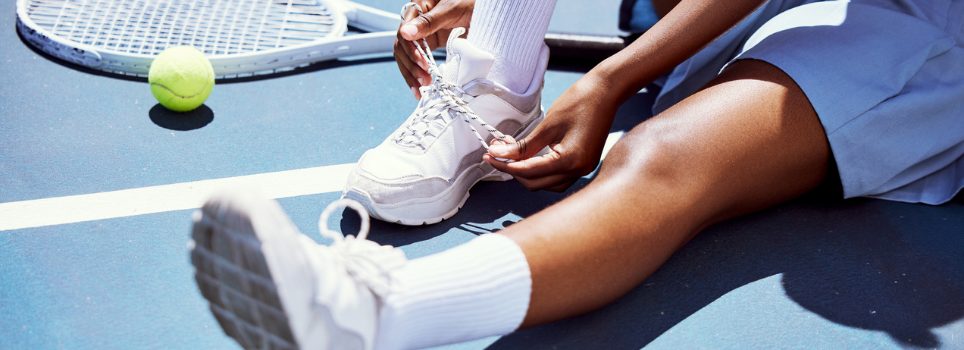Individuals with hallux valgus may encounter difficulties and even experience pain when wearing certain types of shoes or participating in specific sports.
Can you still engage in sports with hallux valgus? And which sports are recommended?
Hallux Valgus and Sports
Individuals predisposed to developing hallux valgus or those already experiencing the characteristic “bunion” deformity can allegedly participate in any sport, regardless of their skill level, as long as their feet function optimally and there is harmonious support during different movements.
However, it is crucial to prioritize foot care, starting with choosing appropriate sports equipment tailored to the sport. This includes selecting shoes that provide adequate cushioning for jumping and running. Additionally, wearing suitable socks is essential to prevent slipping and minimize friction that can lead to blisters.
How to Identify Disharmony in Gait Caused by Hallux Valgus
Hallux valgus can manifest in various forms. In some cases, there may be a mild, painless deformity that is compatible with participation in any sport, even at a high level. However, in other instances, the deformity may be painful, even if mild, or may progress to a point where wearing any footwear becomes challenging.
When hallux valgus reaches this stage, any physical activity, including walking, can become difficult and painful. Therefore, individuals with hallux valgus should not solely focus on the appearance of the big toe but also pay attention to signs of gait disharmony, such as bunions and blisters, including:
- Calluses (hyperkeratosis). Whether walking in the park, hiking in the mountains, running, playing volleyball, or padel, these activities require the feet to provide proper push-off, particularly from the forefoot. The presence of hyperkeratosis on the soles of the feet, especially around the toe junction below the heads of the second and third metatarsals, indicates that the big toe is not exerting sufficient force during the push-off phase.
- Incorrect stance. Hallux valgus deformity can result in an improper posture, with greater load distribution on the outer edge of the sole. This stance can impede movement in sports such as tennis, padel, basketball, or volleyball, particularly when quick direction changes are required.
By recognizing these signs, individuals with hallux valgus can better understand the impact on their gait and make smart decisions regarding sports activities and footwear choices.
Hallux Valgus and Sports: The Importance of Specialist Examination
Individuals encountering difficulties due to hallux valgus should consider seeking an evaluation from a specialist. By utilizing X-rays on the foot in a standing position, the specialist can accurately assess the need for correcting hallux valgus.
There is no need to be apprehensive about the examination or potential surgical procedures. Modern and minimally invasive correction techniques are available, enabling individuals to swiftly return to participating in sports at any level, including competitive sports.
-
3,400 Physicians
-
110,400 Annual surgeries
-
190,400 Annual Inpatient Admissions
-
928,000 Patients


